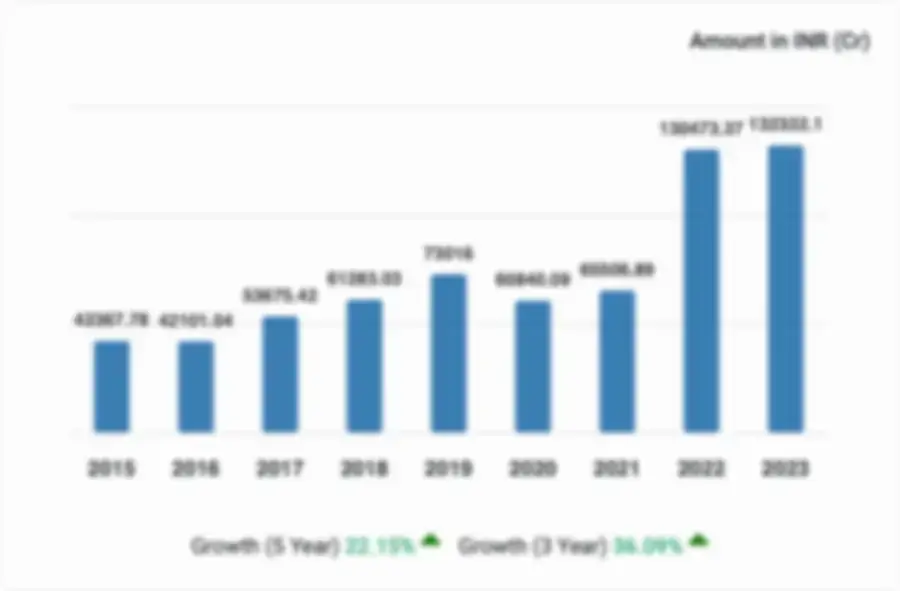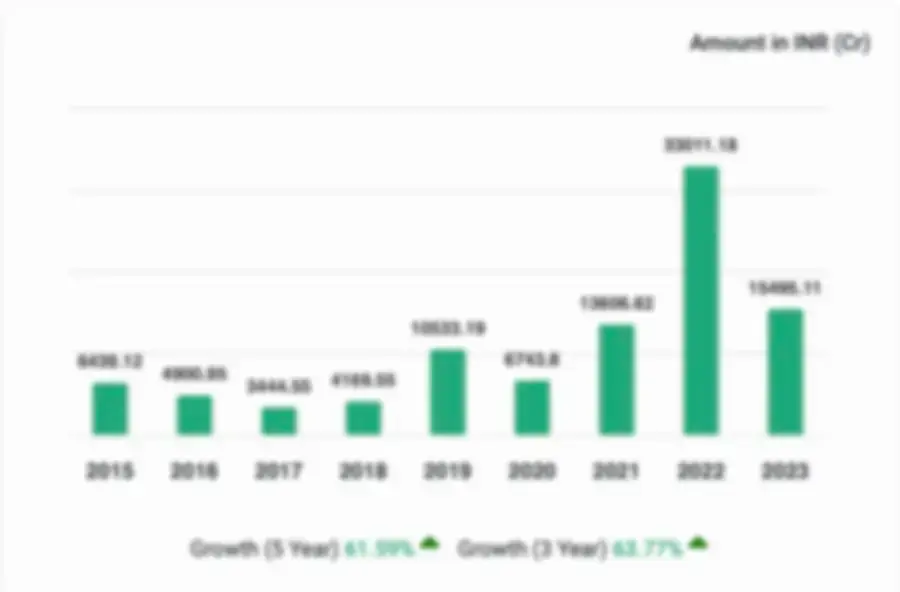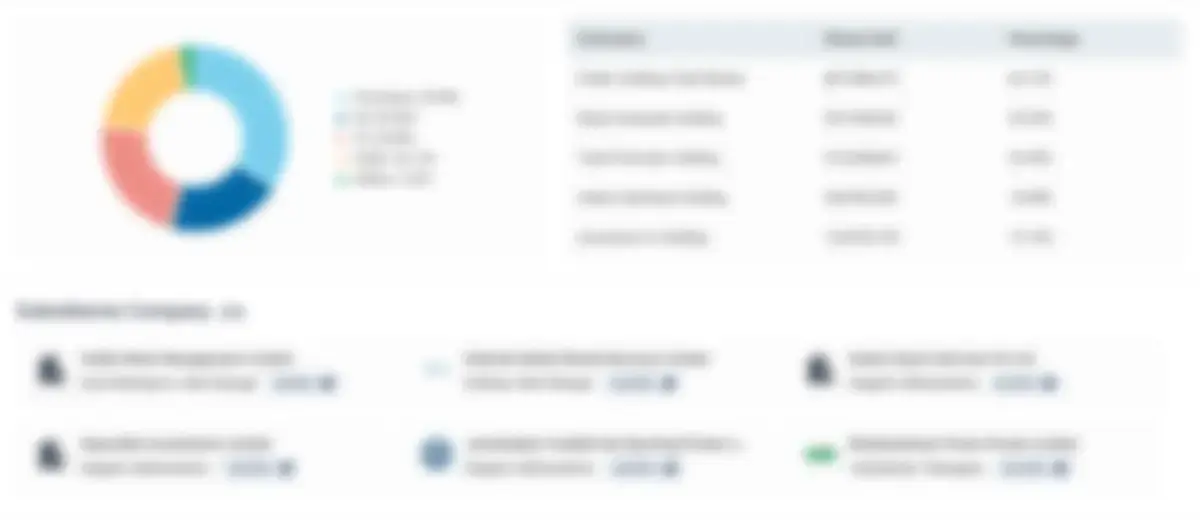

Sahaj Ai Software Profile
Key Indicators
- Authorised Capital ₹ 2.60 Cr
- Paid Up Capital ₹ 2.60 Cr
- Company Age 4 Year, 4 Months
- Last Filing with ROC 31 Mar 2024
- Open Charges ₹ 10.25 Cr
- Revenue Growth 524.48%
- Profit Growth 8719.73%
- Ebitda 5119.13%
- Net Worth 5951.35%
- Total Assets 350.01%
About Sahaj Ai Software
Sahaj Ai Software Private Limited (SASPL) is a Private Limited Indian Non-Government Company incorporated in India on 09 December 2020 (Four years and four months 9 days old ). Its registered office is in Bangaluru, Karnataka, India.
The Company is engaged in the Information Technology Industry.
The Company's status is Active, and it has filed its Annual Returns and Financial Statements up until 31 March 2024. It's a company limited by shares with an authorized capital of Rs 2.60 Cr and a paid-up capital of Rs 2.60 Cr.
The company currently has active open charges totaling ₹10.25 Cr.
Rohit Bansal, Agrawal Akash, Sunder Malyandi, and One other member serve as directors at the Company.
Company Details
- Location
Bangaluru, Karnataka, India
- Telephone
+91-XXXXXXXXXX
- Email Address
- Website
- Social Media
Corporate Identity Details
- CIN/LLPIN
U72900KA2020PTC142044
- Company No.
142044
- Company Classification
Private Limited Indian Non-Government Company
- Incorporation Date
09 Dec 2020
- Date of AGM
30 Sep 2024
- Date of Balance Sheet
31 Mar 2024
- Listing Status
Unlisted
- ROC Code
Roc Bangalore
Industry
Who are the key members and board of directors at Sahaj Ai Software?
Board Members (4)
| Name | Designation | Appointment Date | Status |
|---|---|---|---|
| Sunder Malyandi | Director | 09-Dec-2020 | Current |
| Nitin Dhall | Director | 16-Aug-2021 | Current |
| Agrawal Akash | Director | 16-Aug-2021 | Current |
| Rohit Bansal | Director | 09-Dec-2020 | Current |
Financial Performance of Sahaj Ai Software.
Sahaj Ai Software Private Limited, for the financial year ended 2023, experienced significant growth in revenue, with a 524.48% increase. The company also saw a substantial improvement in profitability, with a 8719.73% increase in profit. The company's net worth Soared by an impressive increase of 5951.35%.


- Key Matrics
- Balance Sheet
- Profit and Loss
- Cash Flow
- Ratios
| Metrics |
| (FY 2022) | (FY 2021) | (FY 2020) | (FY 2019) | ||
|---|---|---|---|---|---|---|---|
| Total Revenue |
| ||||||
| Revenue from Operations |
| ||||||
| Total Assets |
| ||||||
| Profit or Loss |
| ||||||
| Net Worth |
| ||||||
| EBITDA |
|
What is the Ownership and Shareholding Structure of Sahaj Ai Software?
In 2023, Sahaj Ai Software had a promoter holding of 100.00%. Access key insights, ownership, including shareholding patterns, funding, foreign investors, KMP remuneration, group structure, and overseas investments.

Related Corporates (Common Directorship)
 Sahaj Software Solutions Private Limited
Sahaj Software Solutions Private LimitedRohit Bansal, Agrawal Akash and 2 more are mutual person
 Ayatana Holdings India Private Limited
Ayatana Holdings India Private LimitedRohit Bansal is a mutual person
Charges (Loans)
₹10.25 Cr
₹0
Charges Breakdown by Lending Institutions
- Others : 10.25 Cr
Latest Charge Details
| Date | Lender | Amount | Status |
|---|---|---|---|
| 30 Mar 2022 | Others | ₹10.25 Cr | Open |
How Many Employees Work at Sahaj Ai Software?
Sahaj Ai Software has a workforce of 166 employees as of Apr 10, 2024. Unlock access to detailed historical data on individuals associated with the company, including employment records, contributions to the Employees' Provident Fund Organization (EPFO), and other related insights.

Deals i

Gain comprehensive insights into the Deals and Valuation data of Sahaj Ai Software, offering detailed information on various transactions, including security allotment data. Explore the intricate details of financial agreements, mergers, acquisitions, divestitures, and strategic partnerships that have shaped Sahaj Ai Software's trajectory.
Rating

Access the credit rating data, providing valuable insights into the company's creditworthiness and financial stability. Explore assessments from leading credit rating agencies, evaluating factors such as debt obligations, liquidity, profitability, and overall financial health.
Alerts

Stay informed about regulatory alerts and litigation involving and associated companies. Receive timely updates on legal proceedings, regulatory changes, and compliance issues that may impact the company's operations, reputation, and financial performance. Monitor litigation involving subsidiaries, joint ventures, and other affiliated entities to assess potential risks and liabilities.
Latest Updates, News, and FAQs on Sahaj Ai Software
Recent activity within the organization
- Annual General Meeting
Sahaj Ai Software Private Limited last Annual general meeting of members was held on 30 Sep 2024 as per latest MCA records.
- Balance Sheet
Sahaj Ai Software Private Limited has filed its annual Financial statements for the year ended 31 Mar 2024 with Roc Bangalore.
- Charges
A charge with Others amounted to Rs. 10.25 Cr with Charge ID 100563992 was registered on 30 Mar 2022.
- Director Appointment
Agrawal Akash was appointed as a Director was appointed as a Director on 16 Aug 2021 & has been associated with this company since 3 years 8 months .
- Director Appointment
Nitin Dhall was appointed as a Director was appointed as a Director on 16 Aug 2021 & has been associated with this company since 3 years 8 months .
- Director Appointment
Sunder Kumar Malyandi was appointed as a Director was appointed as a Director on 09 Dec 2020 & has been associated with this company since 4 years 4 months .
Frequently asked questions
What is the Incorporation or founding date of Sahaj Ai Software Private Limited?
Sahaj Ai Software Private Limited was incorporated on 09 Dec 2020.
What is authorized share capital and paid-up capital of Sahaj Ai Software Private Limited?
The authorized share capital of Sahaj Ai Software Private Limited is ₹ 2.60 Cr and paid-up capital is ₹ 2.60 Cr.
Who are the current board members & directors of Sahaj Ai Software Private Limited?
Currently 4 directors are associated with Sahaj Ai Software Private Limited.
- Rohit Bansal
- Agrawal Akash
- Sunder Kumar Malyandi
- Nitin Dhall
What is the registered address of Sahaj Ai Software Private Limited?
As per Ministry of Corporate Affairs (Mca), the registered address of Sahaj Ai Software Private Limited is No365 3Rdfloor Sulochanabuilding1Crossrd 3Rdblockkoramangala, India, Bangalore, Karnataka, 560034.
What is the corporate identification number (CIN) and company number of Sahaj Ai Software Private Limited?
The corporate identification number (CIN) of Sahaj Ai Software Private Limited is U72900KA2020PTC142044 and the company number is 142044 as per Ministry of Corporate Affairs (MCA).
What is the official website of Sahaj Ai Software Private Limited?
The Official website of Sahaj Ai Software Private Limited is https://www.sahaj.ai
What has been the recent revenue trend for Sahaj Ai Software Private Limited?
According to the financial reports for the fiscal year 2023, the revenue trend for Sahaj Ai Software Private Limited has risen by 524.48%.
How many employees does Sahaj Ai Software Private Limited currently have?
As Per 2023 financial reports, 166 employees are currently employed by Sahaj Ai Software Private Limited.
What change has been observed in the net worth of Sahaj Ai Software Private Limited, and by what percentage?
The financial reports for the fiscal year 2023 indicates that The net worth of Sahaj Ai Software Private Limited has experienced an upsurge of 5951.35%.
What are the total open charges for Sahaj Ai Software Private Limited?
As per the financial statements for fiscal Year 2023, The total open charges for Sahaj Ai Software Private Limited amount to ₹ 10.25 Cr.
When was the last Balance Sheet of Sahaj Ai Software Private Limited filed with the ROC?
The most recent Balance Sheet for Sahaj Ai Software Private Limited was filed with the ROC on 31 Mar 2024.
Search company & director profiles for free and gain access to critical business data.
- 3.1M+ Companies
- 15M+ Legal Cases
- 525K+ Credit Ratings
- 5.8M+ Directors & KMP
- 750K+ Regulatory Alerts
- 1.1M+ Companies' Financial Records
